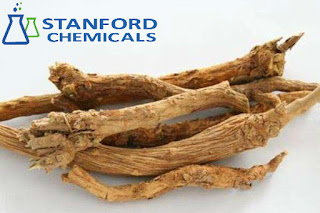Key Technologies of 10-hydroxycamptothecin Extraction
Camptothecin production mainly includes three methods: natural extraction, total chemical synthesis, and semi-chemical synthesis.
The CPT prepared by natural extraction is S shape and has high activity. However, because CPT has limited natural plant resources and less CPT content, it is easy to be affected by seasons and producing areas, which limits the wide application of this method. Natural extraction methods include the organic solvent method, alkali method, column chromatography method and resin adsorption method. The purity of the product is low and the color is deep, but the step is simple, the recovery is high and the post-processing is convenient. The extraction time is short and the extraction rate is high. The purity of the products obtained by the column chromatography and resin adsorption is high, but the yield is low and the steps are tedious.
1. Organic solvent extraction and extraction separation
The raw material is pulverized with 70% to 90% ethanol as the solvent by the method of infiltration, and concentrates the soluble component, concentrates the leachate and filters the insoluble substances. In the filtrate, the chloroform is extracted, the chloroform is combined, chloroform is recovered and chloroform is added to the residue: methanol (1:1) and reflux, dissoluble, cooling solution, and CPT can crystallize After recrystallization, pure products can be obtained. The melting point is above 260 C and can be used for medicinal purposes. If repeated recrystallization is repeated, the melting point can be further improved. The toxicity of CPT is large, and it should be carefully operated when extracting.
2. Alkali extraction
The extraction of CPT with ethanol as the solvent is not only costly, but also has long extraction time and high energy consumption. With the low NaOH solution as the solvent, the extraction reaction was carried out at normal temperature, the extraction time was short, the extraction rate was high, and there was no fire requirement. It was an ideal extraction method relative to the extraction of ethanol. Wang Yang and other methods were used to extract CPT from the fruit powder of 10-hydroxycamptothecin acuminate. The optimum test conditions were as follows: the extraction time was 3 ~ 4h, the concentration of NaOH solution was 0.3%, the dosage was 16 ml/g each time, and the temperature was extracted at room temperature.
3. Extraction and separation of column chromatography
The basic process of columnar chromatography is to extract with chloroform first, then add industrial ethanol to the extract, and then extract it with ethyl acetate, which is often pressed and concentrated, that is, the extract is obtained. The eluate is chloroform with 2% and 4% methanol, with 2% methanol solvent as CPT and a light yellow prismatic crystal containing 4% methanol, with a yield of HCPT, with a yield of 1/100000.
4. Macroporous adsorption resin method
The process of extracting CPT from Camptotheca acuminata fruit by macroporous adsorption resin is as follows.
The main points of the process are as follows:
(1) 80% ethanol was soaked at room temperature for 24 h and soaked in a total of 5 times.
(2) Using AB-8 resin, 27, 1 mol/L salt concentration pH8 as the upper column adsorption condition, the flow rate was 2 BV/h for adsorption.
(3) Elution of chloroform-ethanol (1:1) mixture with 6 times the volume of pH3 and the flow rate of 2 BV/h;
Concentrate and recover solvent and recrystallize with chloroform-ethanol (1:1) to get CPT finished product.
For more information, please visit http://www.stanfordchem.com/Herbal_Extracts.html
For more information, please visit http://www.stanfordchem.com/Herbal_Extracts.html





Comments
Post a Comment